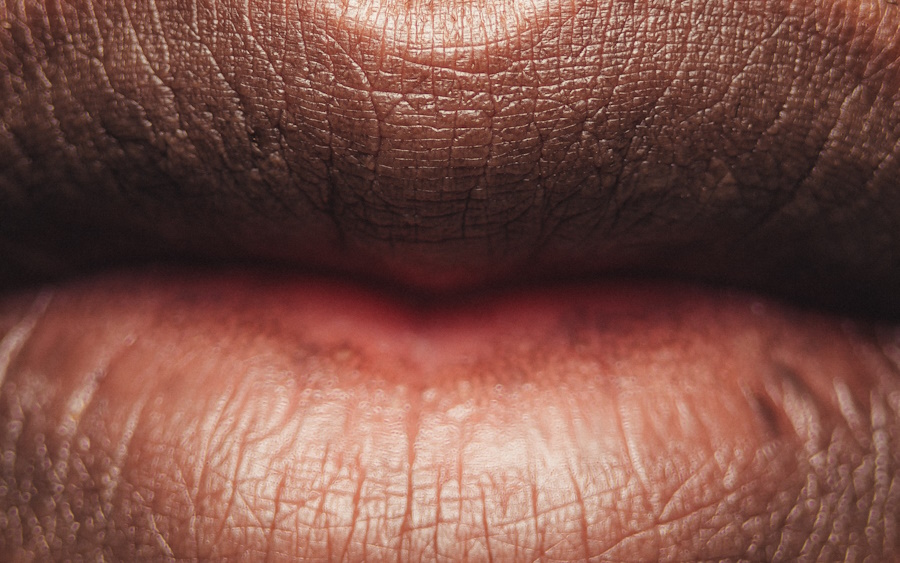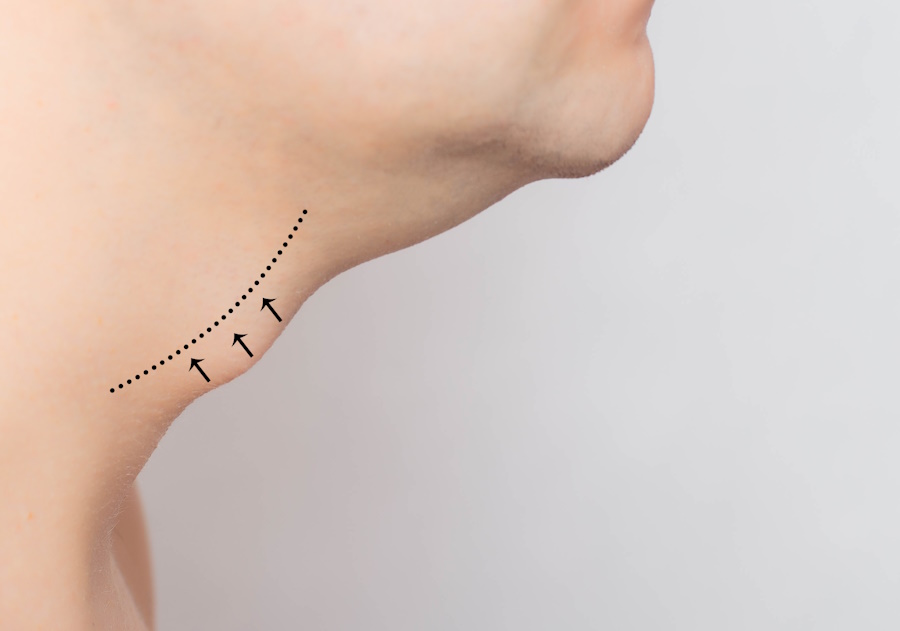The lip bubble or lip trill (also called lip roll) is a semi-occluded vocal sound, which means that the mouth is partially closed off by the lips, singing through a straw or anything covering your mouth, thus causing airflow resistance.
In this case, it’s the lips that are the obstruction that blocks some of the air and sound waves, reflecting them back down your throat and providing energy that warms up the vocal folds, causing the vocal cords to stretch with less muscular resistance.
A proper lip trill can help expand vocal range, smooth out register transitions, as well as exercise the voice during warm-up or cool-down. This is also an excellent exercise to help restore a tired or sick voice because it’s gentle on the vocal cords. Instead of forcing them to behave, this stretch encourages them to do what they always do, only better.
Finally, when done properly, this massively popular—yet somewhat misunderstood and misapplied—exercise can take the place of about 100 vocal exercises traditionally used to warm up and coordinate the voice. Why? Because the rapid change of pressure on your vocal cords ameliorates excess muscle tension that will NOT help, but rather resist, free vocal cord vibration.
See Also: Typical Warmup Mistakes

How Do You Perform Lip Bubbles?
Relax
Staying relaxed is very important if you are going to practice lip trills. You will need to keep the jaw loose and slightly dropped and neutral to help alight the lips and keep them loose. Don’t bite down or clench your jaw.
If necessary, you can put your fingers on your cheeks and gently push upward to help relax your lips. (I do this with most of my students because it keeps your cheek muscles more relaxed and lets the lips trill or ‘vibrate’ more freely).
Keeping the tension out of your neck and face will help reduce discomfort as you’re learning this exercise. If there’s any discomfort in your lips, it depends on if you’re staying adequately relaxed, which is a good indicator.
Once you’re set, you can begin with a little breath management. Take five deep breaths, releasing each one without any noise through your relaxed lips. It is common at the beginning to use too much air and generate a breathy sound. If that’s the case, let up a little. The goal is to blow air at a steady rate that produces a little buzz.
*Another additional hint is to the of the sound as a series of ‘B’s’ rather than the airy sound ‘P’s’.
Roll Your Lips
To get your lips going and your brain associated with the idea, warm up with a lip roll or two. Say “Brr” and think of how a motorboat sounds when it’s starting up. Repeat this several times and see how long you can keep the sound going. At this point, the tone should be very smooth and steady.
Don’t be shy about this. You can make pouty lips work to your benefit as well. Especially if any symptoms of excess tension occur. There are many possible causes of tight lips and jaw, which we’ve discussed in many of our blogs on vocal health on our Singing Success website.
You can also experiment with tongue trills, which are very similar. Instead of the buzz being on your lips, you will feel it on the tip of the tongue as it is lightly pressed against the roof of the mouth, producing a series of T’s or, even better, D’s. This is also referred to as rolling your R’s, as in the Spanish word ‘arriba’.
*Another helpful hit is to realize that this should drastically reduce throat pain unless you have some sort of infection. In that case, go see your doctor!
Close Your Cords
This step requires extra muscle coordination. This is where you begin to use your entire singing voice which means you’re graduating from the airy, weak sound of the first two steps.
Utilizing deep breaths and good breath support, move your voice up with a “bwoop.” Don’t strain your voice, but do go far into your range. Do this ten times, then repeat the process going down.
Also, realize this exercise is to keep you from being too ‘airy’ in your lip trill. So, utilizing a deep breath to allow the cord closure ensures better breath control.

Keep The Larynx Low
To help keep your vocal cords closed and connected, remember to keep the larynx low. If you were wondering why lip trills are done with a “dopey” sounding “uh” vowel, this is why. It helps activate your lower larynx. Don’t try to force it, but instead, focus on your vowel shape.
To get technical for a second, we want the larynx low (also called a neutral larynx) because it allows for the intricate muscles to do their jobs properly, which is tilting and thinning (thick vocal cords are too tense) the vocal cords as needed. When the larynx is raised, the muscles that are supposed to manipulate the vocal cords become too tense, causing the need for extra pressure to sing, so we compensate with outer muscles, which is when we end up straining our voices.
Activate the Vocal Folds
The vocal folds (also called vocal cords) are part of the larynx. When the vocal folds vibrate, they create the tone.
To really get your vocal cords going, stay within the middle of your range and slide up and down like a siren. Don’t try to reach the extremes of your voice with this step, as that could potentially cause some problems or encourage incorrect technique. Just stay where it’s comfortable and wail a siren sound about ten times. It’s not the most pleasant exercise to listen to, but it’s very effective in activating all the vocal cords and prepping the singer for a performance, lesson, or practice session.
Utilizing scales—like the Rossini scale—will allow you to make a gradual range extension and develop your ear at the same time. My vocal courses are laid out perfectly to reduce the difficulty and irritation that can occur.
Maintain The Spacial Resonance
Resonant space isn’t just created by a lower larynx, but also by the slightly lowered (AKA: relaxed) jaw. You need to ensure that your jaw doesn’t clench on you at any point during your singing.
Also, consider whether your sound is trapped in the back of your throat (incorrect) or in the front of your face (correct). You might feel the resonance on your lips when you find the right balance. Speaking of balance, you’re seeking a sound that is tension-free and still fairly loud. It will take some experimentation to get there, so go easy on yourself and your voice.
Who Are Some Famous Singers That Use Lip Trills?
There are many singers that use lip bubbles. In fact, it’s hard to find a singer who doesn’t.
Lucas Meacham, the world-renowned, Grammy-winning opera singer, likes to say “lip trills are life.”
There is no limit on this exercise, which makes it perfect for every age, range, voice type, and genre. It requires nothing but benefits much.
Here is a list of famous singers who use lip trills:
- Celine Dion
- Nicole Scherzinger
- Tori Kelly
- Lucas Meacham
- Michael Jackson
- Stevie Wonder
- Leona Lewis
- Taylor Swift
- Hayley Williams
- Keith Urban
Plus, literally 100’s of others that my associates and colleagues have coached.

What is a Lip Trill Good For?
When we do lip trills, our lips behave very similarly to our vocal cords. Because the mouth is closed, pressure builds up inside with much less resistance. Because of this, it’s easier to achieve the correct balance of air for singing. This becomes especially critical in the higher notes of a singer’s range.
In addition to a balanced tone, you’re training breath control and creating habits of keeping your muscles relaxed. As we already mentioned, the back pressure for your vocal cords is also a fantastic benefit.
What if Someone Can’t Perform a Lip Bubble?
If you cannot do a lip trill, it’s most likely because your muscles are far too taut. This is why I have singers use their fingertips to support the corners of the mouth and cheeks. Work at it until you can get even the lips to make a bubble sound. Once you can, work until you can maintain the buzz, and then continue on with the next steps.
Why Should You Do Lip Trills?
Lip trills have many benefits. Among the most prominent is that they equalize pressure above and below the vocal folds by providing an extra point of resistance for the air. This makes it easier for your vocal cords to stay connected as you move throughout your range, specifically higher.
Furthermore, a large number of throat doctors (E.N.T.’s) use lip trill, post-surgery, to help the voice to heal more rapidly.
Avoid Canker Sores When Doing Lip Trills

Never do lip trills with a dry mouth. This can lead to canker sores, which are painful. Also, it is best to not do li trills after having an allergic reaction, such as a food reaction. Some of these reactions can make your mouth more susceptible to canker sores, which is something you want to avoid when at all possible.
Medical treatment for canker sores is usually just an over-the-counter cream. They’re not too hard to take care of, but they are inconvenient. Be aware of your mouth, and make sure you don’t practice lip trills for too long or if your mouth is already hurting. Also, you may need to see a doctor and get treatment for an infection. Self-diagnosis isn’t always helpful. So if you have symptoms or allergic reactions, concern yourself to prevent further infections or the need for medications.
Take Lessons to Perfect Your Lip Bubbles
To book a lesson with a certified Singing Success coach, call us at:
615-866-1099
Or click the link below:
Singing Success vocal coaches.





